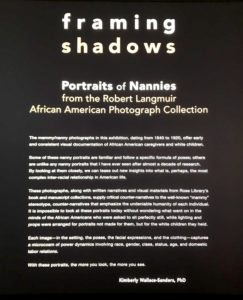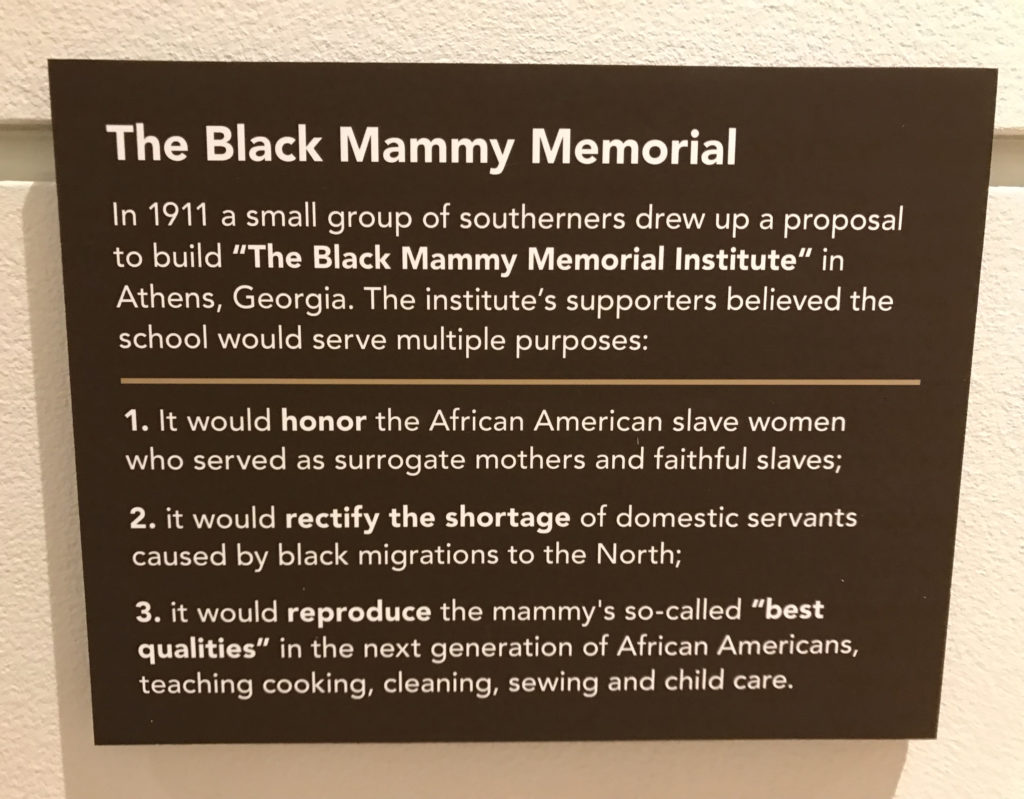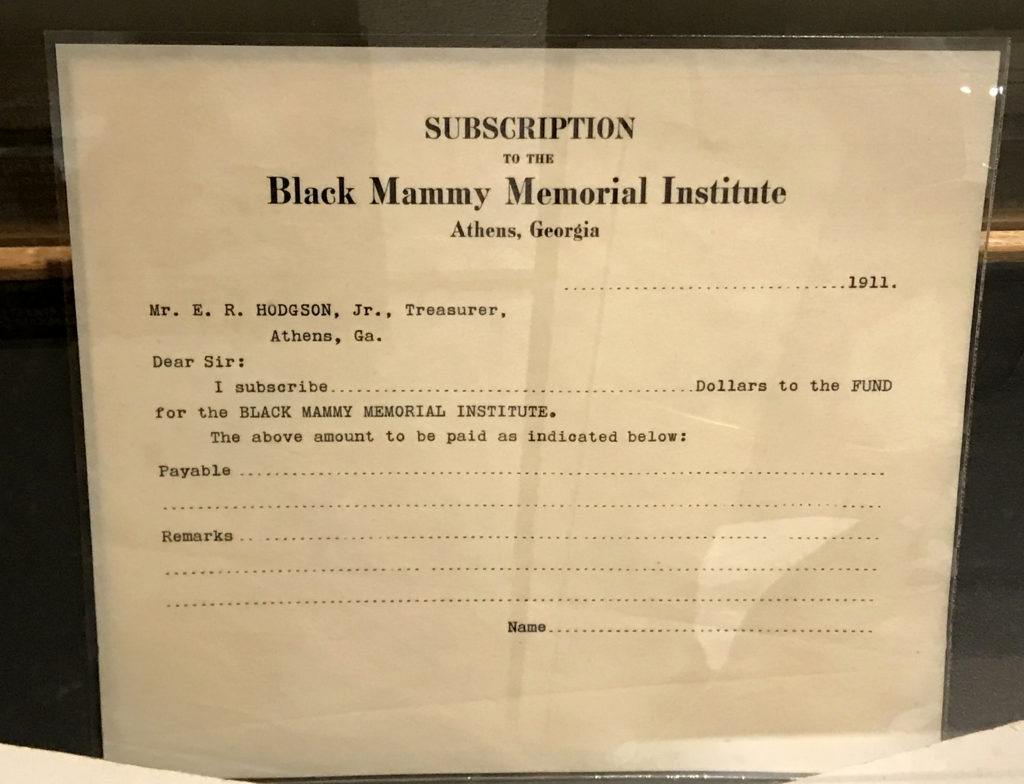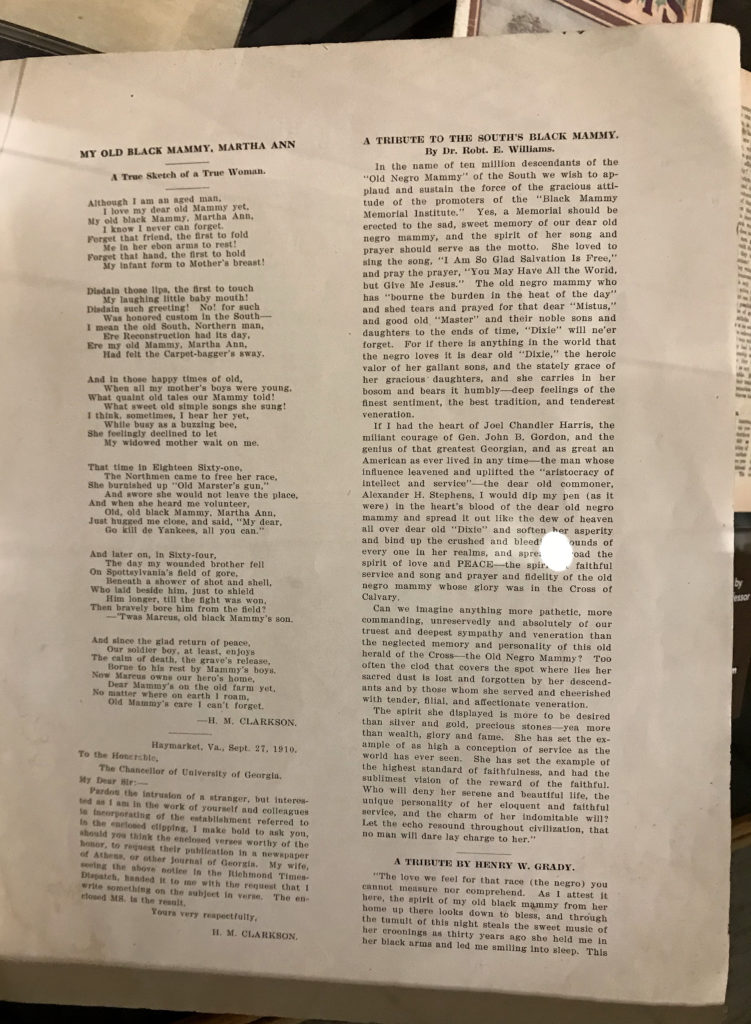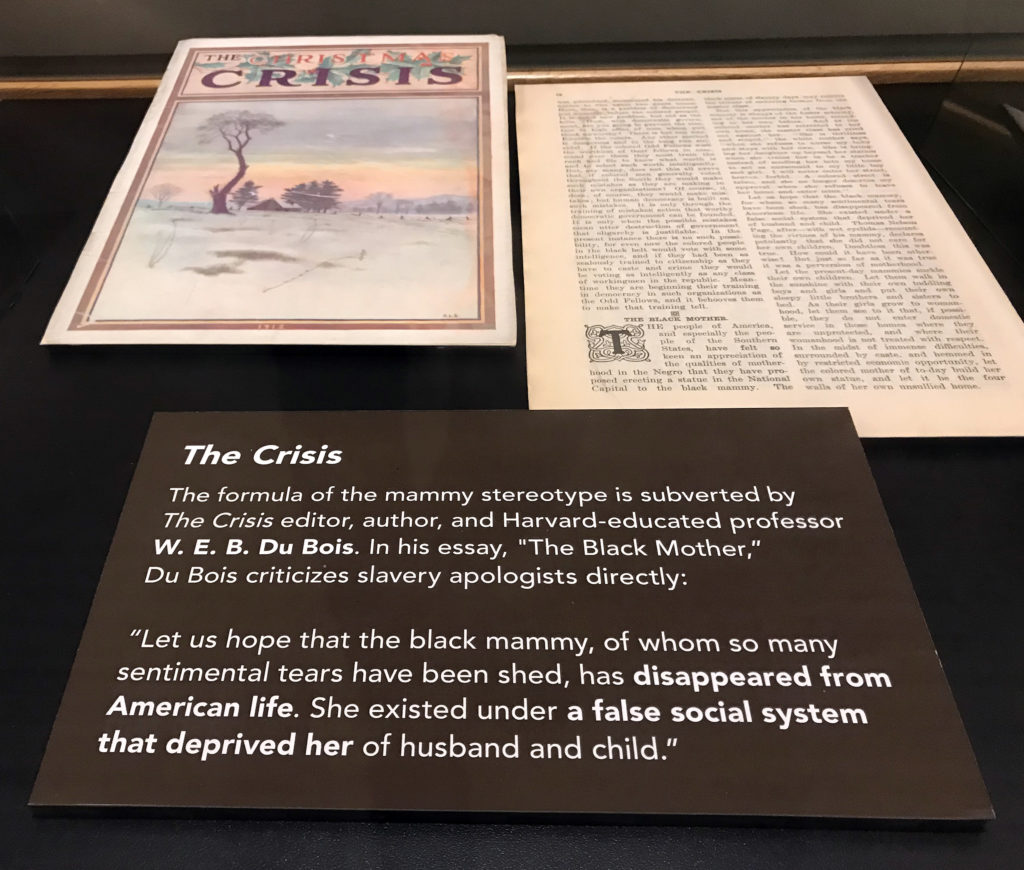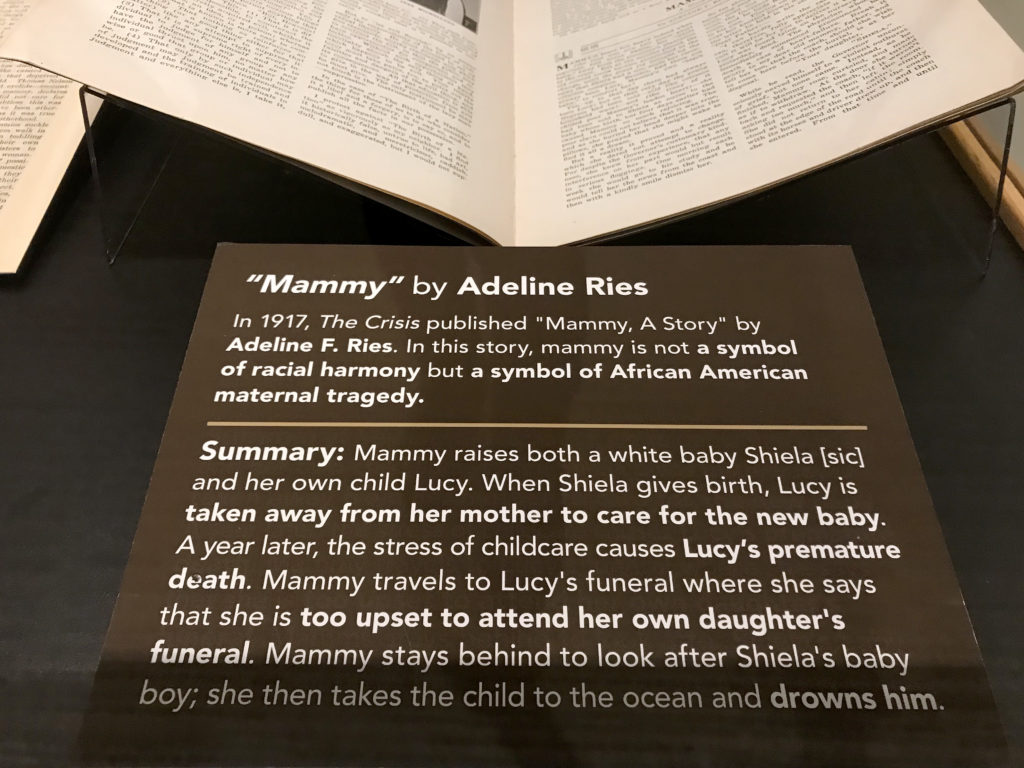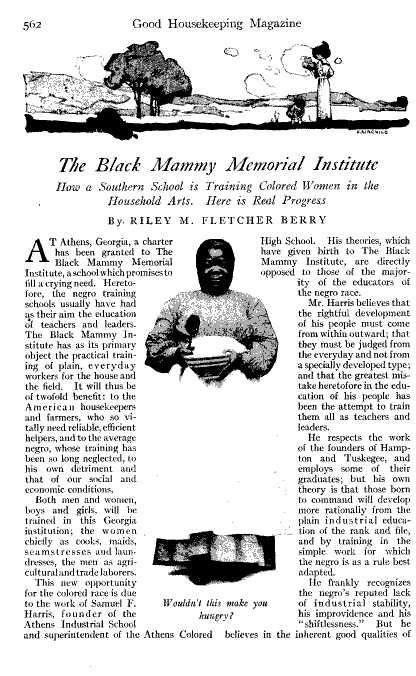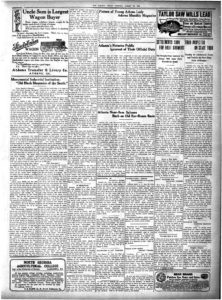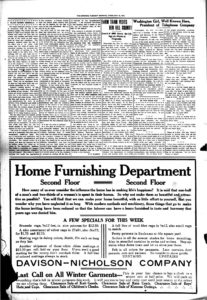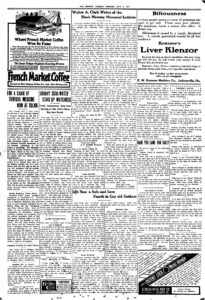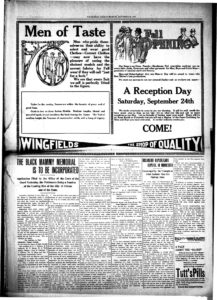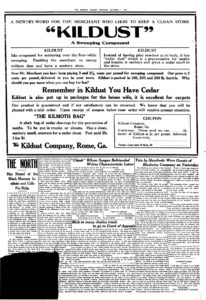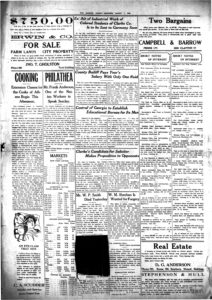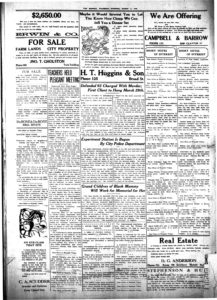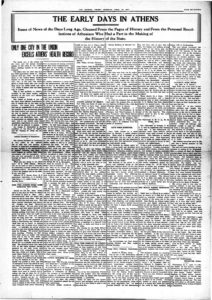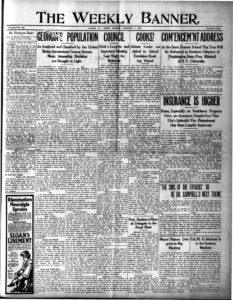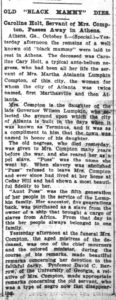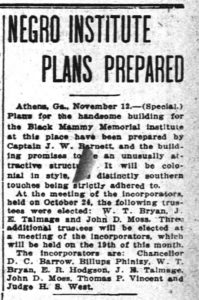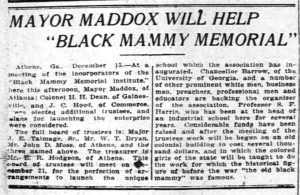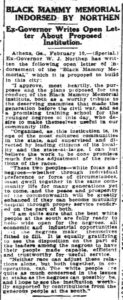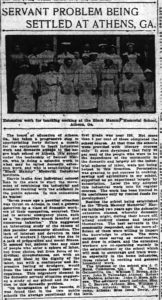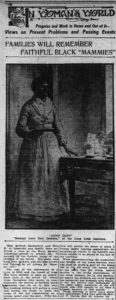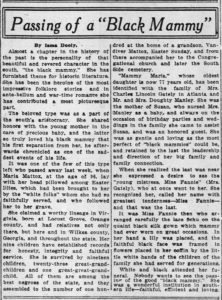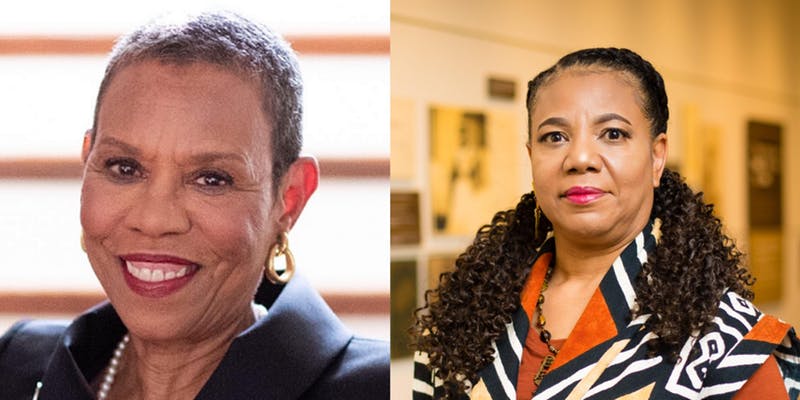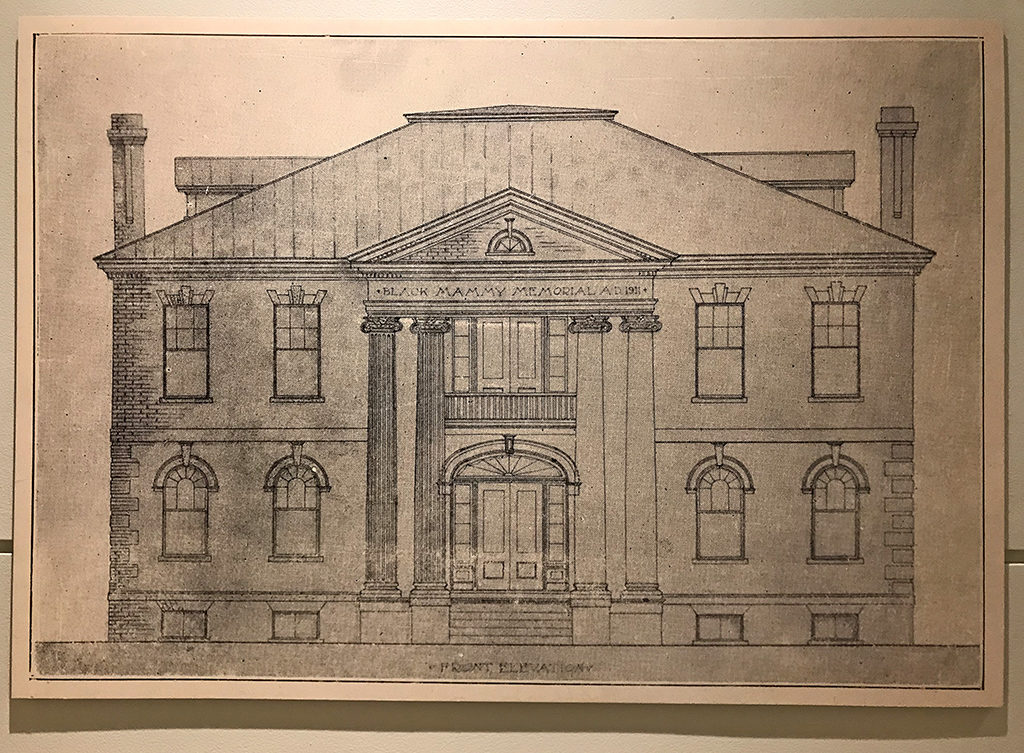
A 1911 drawing for a proposed Black Mammy Memorial Institute in Athens, GA displayed at Emory's "Framing Shadows" exhibition, which opened in Feb. 2019 and runs though Jan. 5, 2020. Woodruff Library, Level 3, (Fishburne Parking Deck FREE on weekends).
Last Saturday I arrived early for a research appointment at Emory’s Rose Library, so I took the stairs up to the third floor of the Woodruff Library to check out the powerful exhibition, “Framing Shadows: Portraits of Nannies from the Robert Langmuir African American Photograph Collection.” Kimberly Wallace-Sanders, associate professor of American Studies and African American Studies at Emory, has thoughtfully curated 20 stirring portraits of nannies from Langmuir’s collection (12,000 photos from 1840–1970!), and “Framing Shadows” also pulls together brief videos of Wallace-Sanders, who’s currently at work on her second book about African American nannies, detailing the Langmuir collection, the humanizing and educational installation, and her research. Several glass display cases of relevant rare books and materials, also selected from the Stuart A. Rose Manuscript, Archives and Rare Book Library, further contextually anchor the complex exhibit which runs though Jan. 5, 2020.
A particular display in "Framing Shadows" has been on my mind all week, though. In 1910, a great effort got underway to build the Black Mammy Memorial Institute in Athens, GA (not to be confused with the 1923 campaign pushed by the U.D.C. for a national "Negro Mammy" monument in Washington, D.C.). The architectural rendering of the Classical-style building hangs above the glass case, which includes a promotional brochure showing tributes to "black mammies" from prominent Athenians and even Henry W. Grady, a subscription form to support the memorial institute, a Dec. 1912 issue of The Crisis magazine open to W.E.B. Du Bois’ essay, “The Black Mother,” and the 1917 story, “Mammy,” also from The Crisis, by Adeline Ries, among many other archival treasures — you will simply need to experience “Framing Shadows” for yourself to confront your own reactions and feelings and understanding of the long tradition of black women raising white people's children.
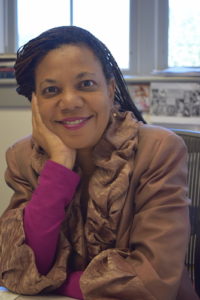
Kimberly Wallace-Sanders
For example, when I wrote about Bukumba a couple of years ago, I didn't doubt the family had genuine love and affection for her, but I also struggled with her ultimately sacrificial role during the 1920 flu epidemic. To me she was such a special hero as are these all too often unsung caregivers, so I am quite grateful Robert Langmuir knew in his heart's eye (as did Professor Kimberly Wallace-Sanders) to dignify them (and so much of the African American experience!) and to capture their humanity— these portraits are absolute treasure. "Framing Shadows" is more evidence that Emory continues to reckon with its past ties to slavery just as so many other universities, such as the University of Georgia, Oglethorpe University, Georgia Tech, and numerous other institutions, are still reconciling theirs and new knowledge is brought into the light. In fact, as I will explore in a future post, many of these same universities are directly linked to the history of the Stone Mountain Confederate carving, some of its most notable sculptors, and even wear its stone.
"Let us hope that the black mammy, of whom so many sentimental tears have been shed, has disappeared from American life. She existed under a false social system that deprived her of husband and child." — W.E.B. Du Bois
 Needless to say, after learning about the Black Mammy Memorial Institute, I was eager to learn more, and I still have so many questions (my first was "WHAT?!"). Who was involved? Did it ever get built, and if so, where? Did it ever relate to the West Broad Street School currently being considered for historic preservation or later evolve into the historically-marked Athens Industrial High School for colored students, which was also helmed by prominent African American educator Sam F. Harris (pictured right)? Do enough (any!) people understand how this literally contributed to institutionalized racism and explicitly aimed to "solve the servant problem?" It's no secret to those that know me that poring over old news articles is among my favorite pastimes, so I've begun compiling some of these as a resource for now, and I will first single out the October 1911 issue of Good Housekeeping magazine (thank you Cornell University for so many old issues!), because it's a national publication.
Needless to say, after learning about the Black Mammy Memorial Institute, I was eager to learn more, and I still have so many questions (my first was "WHAT?!"). Who was involved? Did it ever get built, and if so, where? Did it ever relate to the West Broad Street School currently being considered for historic preservation or later evolve into the historically-marked Athens Industrial High School for colored students, which was also helmed by prominent African American educator Sam F. Harris (pictured right)? Do enough (any!) people understand how this literally contributed to institutionalized racism and explicitly aimed to "solve the servant problem?" It's no secret to those that know me that poring over old news articles is among my favorite pastimes, so I've begun compiling some of these as a resource for now, and I will first single out the October 1911 issue of Good Housekeeping magazine (thank you Cornell University for so many old issues!), because it's a national publication.
Next, here are some related articles from the Athens, GA newspapers from 1910-1913 (thank you Digital Library of Georgia for making so many historic newspapers available), which seem to stop with an announcement of the proposed dedication of the farm land that had been purchased for the Black Mammy Memorial Institute. Also, keep in mind that around the same time, articles such as this one from 1912, were published espousing the white supremacist views of the Sons of the Confederate Veterans. Not to say there aren't more articles, but the next mention I found of the the institute, attributed to Spelman College professor and scholar Beverly Guy-Sheftall appeared in an Oct. 3, 1994 article in UGA's Red & Black about a Southern history conference.
Athens Newspaper Articles
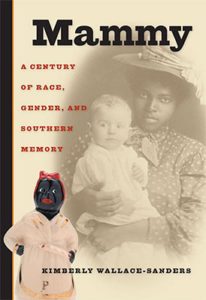 Atlanta-Constitution stories and items about the planned Black Mammy Memorial Institute seem to begin appearing in autumn 1910, but tributes to "black mammy" were printed in years prior and were printed with greater frequency during the effort to sell subscriptions to the institute. And, of course, the stereotype of the "black mammy" was renewed with a vengeance in 1937 with the arrival of "Gone With the Wind' (I was surprised to read that the WPA participated in sewing the "popular black mammy" dolls). The "Framing Shadows" exhibition and these old articles are just a start for me, and after such a deep dive, I look forward to reading Kimberly Wallace-Sanders first book, Mammy: A Century of Race, Gender, and Southern Memory—and, of course her next one on the subject.
Atlanta-Constitution stories and items about the planned Black Mammy Memorial Institute seem to begin appearing in autumn 1910, but tributes to "black mammy" were printed in years prior and were printed with greater frequency during the effort to sell subscriptions to the institute. And, of course, the stereotype of the "black mammy" was renewed with a vengeance in 1937 with the arrival of "Gone With the Wind' (I was surprised to read that the WPA participated in sewing the "popular black mammy" dolls). The "Framing Shadows" exhibition and these old articles are just a start for me, and after such a deep dive, I look forward to reading Kimberly Wallace-Sanders first book, Mammy: A Century of Race, Gender, and Southern Memory—and, of course her next one on the subject.
Atlanta Newspaper Articles
"Framing Shadows"
Feb. 22, 2019—Jan. 5, 2020
Woodruff Library, Level 3, 540 Asbury Cir, Atlanta, GA 30322
Fishburne Parking Deck (FREE on weekends)
“Framing Shadows/Framing Lives: A Rosemary Magee Creativity Conversation” with Mary Schmidt Campbell and Kimberly Wallace Sanders
May 8, 2019
6:00 – 7:00 pm: Reception and viewing of the exhibition “Framing Shadows: Portraits of African American Nannies”, Schatten Gallery, Emory’s Woodruff Library, 3rd Floor
7:30 – 8:30 pm: Program: “Framing Shadows/Framing Lives: a Rosemary Magee Creativity Conversation” with Mary Schmidt Campbell and Kimberly Wallace Sanders, moderated by Rose Scott,Cannon Chapel, Emory's Main Campus

